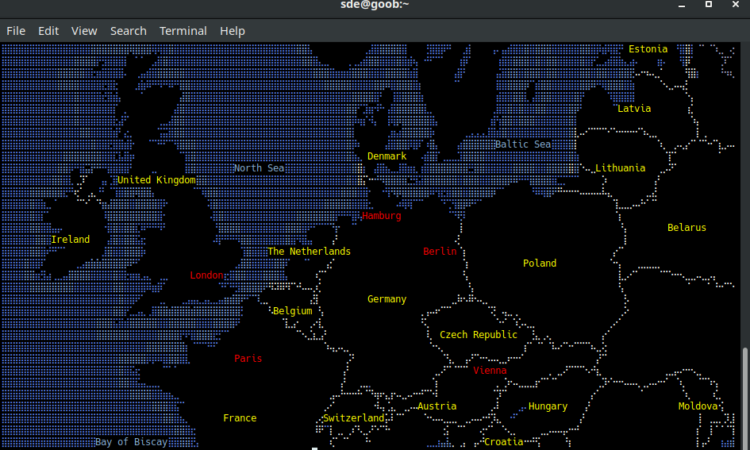Last Updated on September 1, 2020
One of the great strengths of Linux is the whole raft of weird and wonderful open source utilities. That strength does not simply derive from the functionality they offer, but from the synergy generated by using them together, sometimes in conjunction with applications.
The Unix philosophy spawned a “software tools” movement which focused on developing concise, basic, clear, modular and extensible code that can be used for other projects. This philosophy remains an important element for many Linux projects.
Good open source developers writing utilities seek to make sure the utility does its job as well as possible, and work well with other utilities. The goal is that users have a handful of tools, each of which seeks to excel at one thing. Some utilities work well on their own. MapSCII is one of those utilities.
MapSCII is a Node.js based Vector Tile to Braille and ASCII renderer for xterm-compatible terminals. It’s billed as the whole world in your console.
You might be wondering what are Vector Tiles? They’re a way to deliver geographic data in small chunks to a browser or other client application. Vector tiles are similar to raster tiles, but instead of raster images, the data returned is a vector representation of the features in the tile.
MapSCII uses OpenStreetMap for its map data. OpenStreetMap has created a map of the world free to use under an open license.
MapSCII is an example of ASCII art software. That’s a graphic design technique that relies primarily on computers for presentation and consists of pictures put together from characters defined by the ASCII (American Standard Code for Information Interchange) standard. These characters are letters, numbers and special characters such as # / and \. ASCII art is as much a constituent element of the internet as emoticons, cats, or acronyms such as ROTFL and LOL.
Installation
Unlike most Linux utilities, you don’t actually need to install anything to your system. Simply telnet to mapscii.me and you can check out the software.
When I install software I prefer cloning a project’s GitHub code repository, compiling the source code, and installing the software. On this occasion, the easiest way to install MapSCII is using npm, a package manager for the JavaScript programming language.
At a command shell, type:
$ sudo npm install -g mapscii
Open up a terminal and type mapscii and you’re away!
There’s also a snap available, offering the software without modification across many different Linux distributions.
Next page: Page 2 – In Operation
Pages in this article:
Page 1 – Introduction / Installation
Page 2 – In Operation
Page 3 – Other Features
Page 4 – Summary

Amazing job